Introduction |
|
31 December 2020 marked the end of another year, another decade and (most importantly for meteorologists) According to the World
Meteorological Organization, it will introduce a new a two-tier approach to Because the climate varies naturally from year to year, climatologists use standard 30-year Climate normals are presently updated once every 30 years, and the current [as of late 2020] official The second part of this two-tier approach is to update the climatological Standard Normals At the University of Reading climatological station we have observations for the current site at This preliminary study will examine changes in the climate of Reading as revealed by
observations or air, surface and soil temperatures, rainfall, sunshine and the incidence of thunder, |
|
|
|
|
| Note that all numbers are rounded up/down, so there may be an apparent discrepancy in the annual totals.
| |
How has the climate changed in Reading?We are all aware of the trend towards rising temperatures across the globe, but how much has the temperature changed in Reading since 1970? Air temperatureFigure 1 shows that, over the year as a whole, the air temperature rose by about 0.3 degC between 1981-2010 compared to 1971-2000, and by about 0.6 degC between 1991-2020 compared to 1971-2000. The change is slightly larger in late spring/early summer, but quite different in December and April. Why these differences?
|
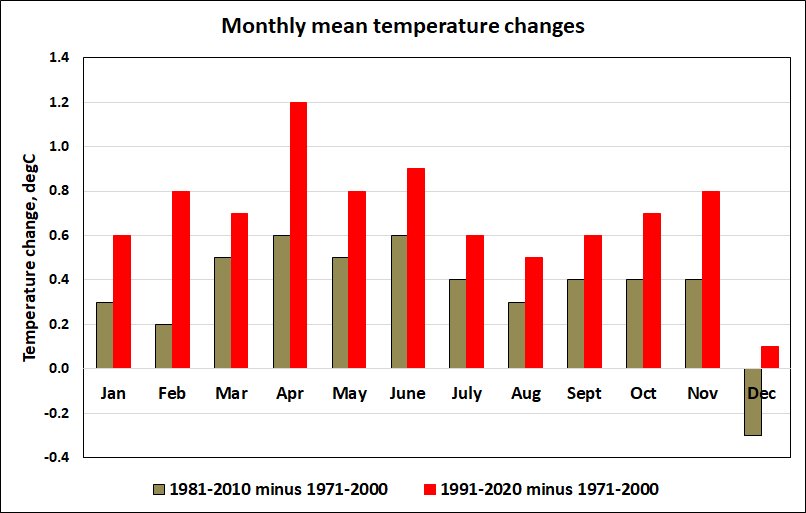
Figure 1. Mean temperature changes each month between 1971-2000, 1981-2010 and 1991-2020. A positive number indicates a warming in recent years.
|
| Night frostsThe incidence of air frost has decreased slightly from 1971-2000 to 1991-2020, with just under 38 days per annum expected now, compared to 41 previously. December is now the frostiest month with an expectation of 9.2 days with air frost in 1991-2020, compared to January in 1971-2000 when 9.6 days with an air frost were expected each year on average. Between 1971-2000 and 1991-2020 the number of days with ground frost (as measured using a thermometer located at grass-tip level) expected each year has declined slightly from about 128 days to 124 days. During 1971-2000 the coldest night each year averaged out with a minimum temperature of -7.1 °C; during the period 1991-2020 this had risen to -6.3 °C. A temperature of -8 °C was recorded in 10 out of the 30 years of 1971-2000; during 1991-2020 this count had declined to just 4 years. So cold nights seem to becoming less frequent.
| 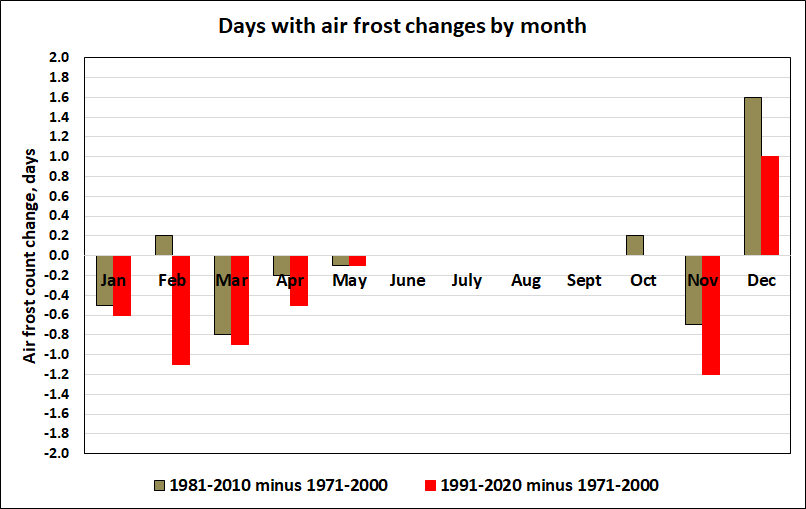
Figure 2. Changes in air frost incidence each month between 1971-2000, 1981-2010 and 1991-2020. A negative number indicates a decrease in the likelihood of air frost.
|
| Hot daysDuring 1971-2000 the highest air temperature each year averaged out at 29.5 °C - during the period 1991-2020 this had risen to 30.9 °C. During 1971-2000 30 °C was reached in 11 out of the 30 years; during 1991-2020 this rose to 18 years, including each year from 2015 to 2020 inclusive. During 1971-2000 an average of 1.7 days each year reached 30 °C (note that 1976 contributed 0.6 days to this total) while during 1991-2020 the average rose to 2.6 days per annum.
| 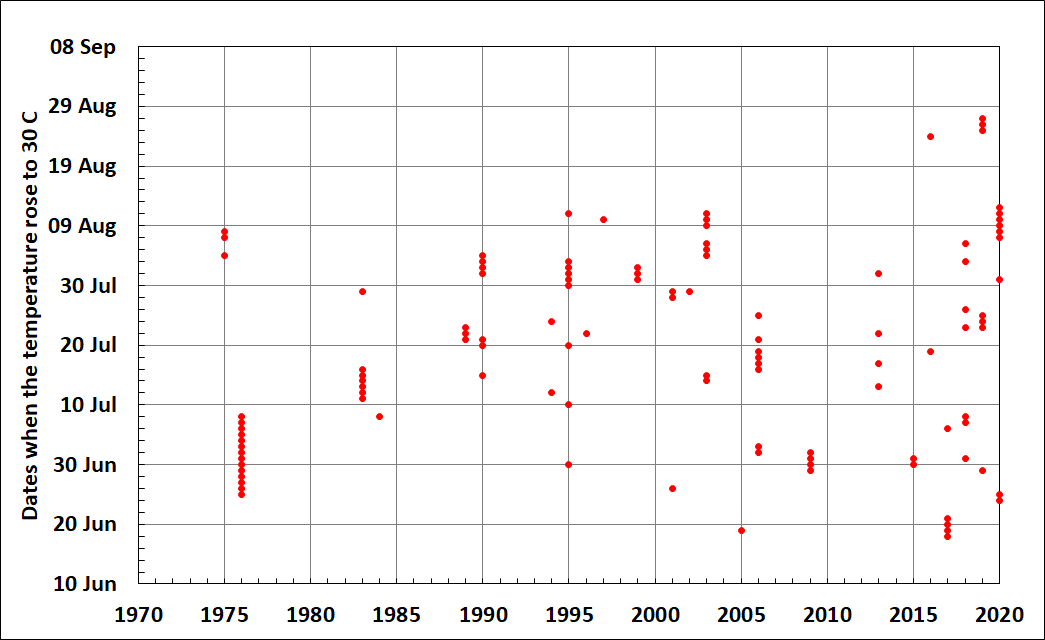
Figure 3. Dates when the air temperature reached 30C each year, 1971-2020.
|
| PrecipitationThe expected precipitation totals each year in Reading have changed from an average of 629.7 mm during 1971-2000, to 634.4 mm during 1981-2010 and then to 654.7 mm in the period 1991-2020. This amounts to a 4 per cent increase across these periods.
| 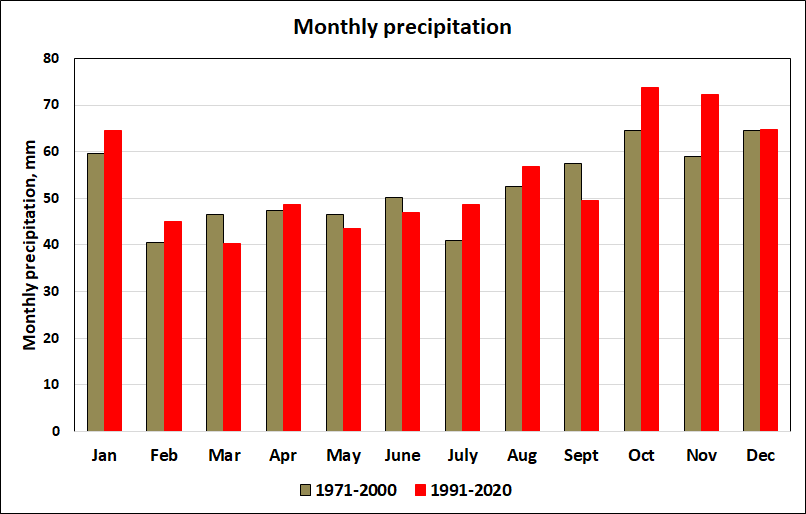
Figure 4. Precipitation changes by month, 1971-2000 to 1991-2020.
|
| Wet daysA warm atmosphere can hold more water vapour than a colder one, so if Reading has become warmer (and slightly wetter) has this been reflected in wetter days and heavier rainfall?
|
| Snowfall and the length of summerWhile precipitation amounts have increased in recent years, the number of days with snow falling and lying have both declined:
|
|
| Sunshine and fogSunshine has been measured using a Campbell-Stokes sunshine recorder. Since 1971 this has been located in several locations, e.g. on the roof of the Department of Chemistry, in the observatory enclosure at a height of about 2 metres, and latterly on the roof the Department of Meteorology. Each site has its own characteristics, and any sunshine trends need to bear this in mind.
| 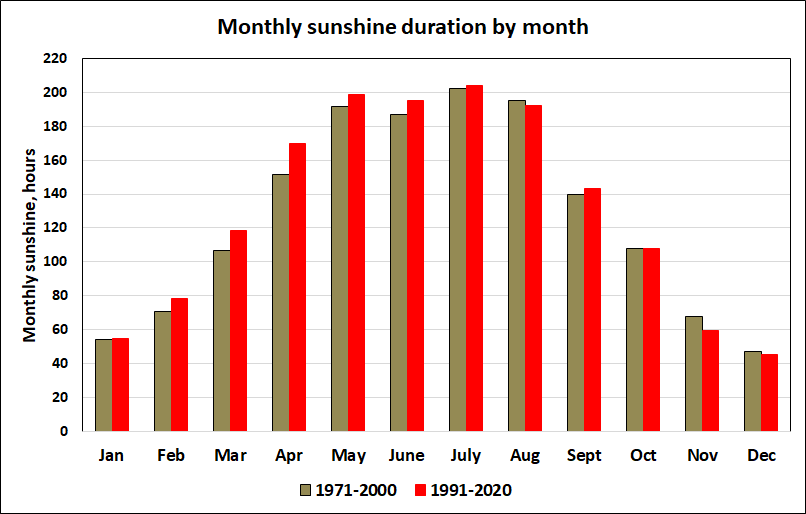
Figure 5. Sunshine changes by month, 1971-2000 to 1991-2020.
| | |||||||||||||||||||||||||||||||||||||||||||||||||||||||||||||||||||||||||||||||||||||||||||||||||||
The hook gauge for measuring evaporationThe hook gauge is one instrument used to determine daily evaporation rates at the University of Reading's weather observatory. A brass hook gauge is placed inside a ‘still well' fixed to the side of a large water tank that is open to the air. The still well provides a small area of water surface free from ripples. It has an opening in the base to equalise water levels inside and out. The height of the hook is adjusted until its point just breaks the surface of the water. The gauge has a micrometer head to permit very fine adjustments to be made. The difference in the water levels (due allowance being made for any precipitation that has fallen) between two consecutive days is noted at 0900 UTC - this is the daily evaporation amount (measured in millimetres), and is credited to the earlier of the two days. If the water surface is frozen, a note is made in the records to this effect, and the evaporation over several days will be recorded once the ice melts. |
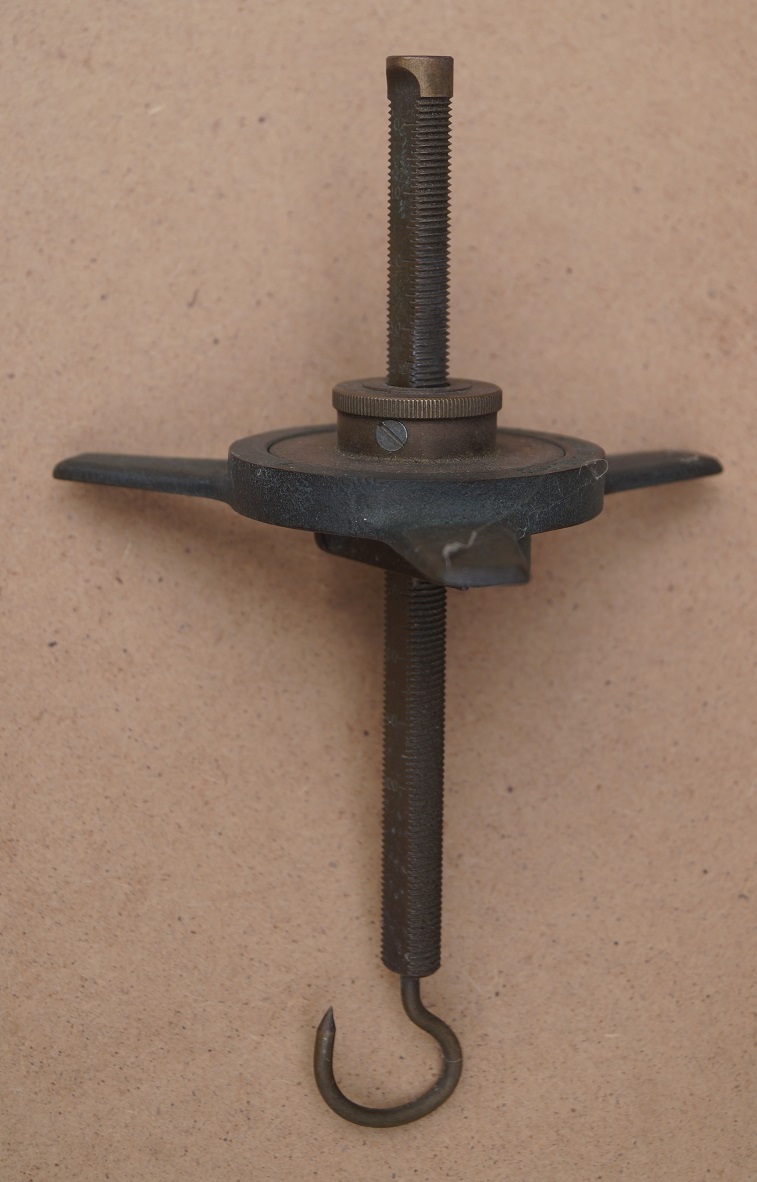
The hook gauge. 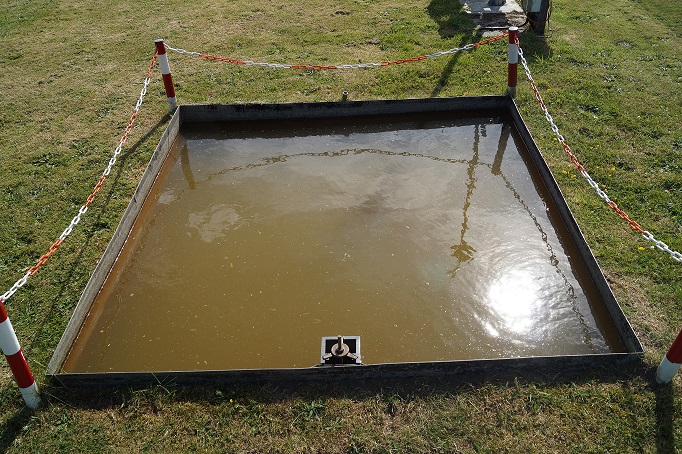
The evaporation tank with hook gauge in place. |